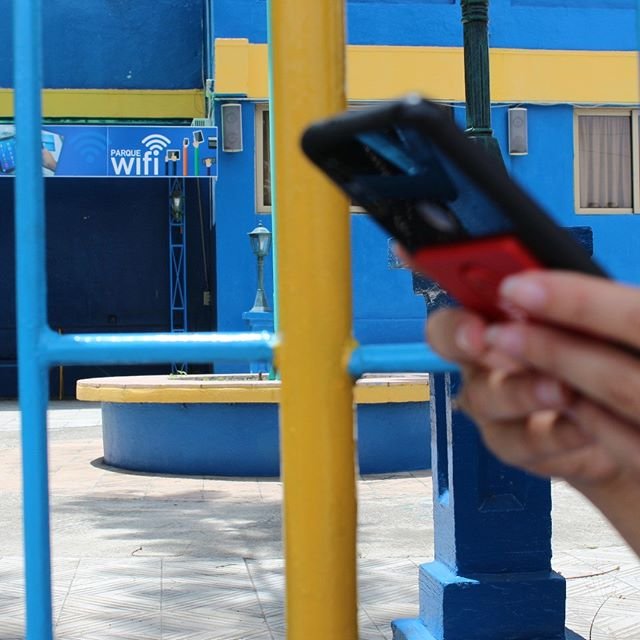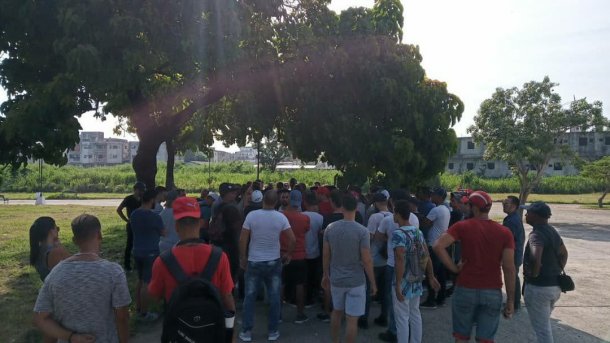Mobilization Initiatives in Cuba Driven by Access to Mobile Data
By Glenda Boza Ibarra (El Toque)

HAVANA TIMES – Something has changed in Cuba ever since mobile data packages became available to the population in December 2018. Some of the over 3 million clients with the ability to connect to the Internet on their phones, have begun to use social media as a space to report events and to mobilize people.
While the majority of these initiatives have been frowned upon by the government and some have been thwarted or accused of being led by mercenaries, the rise in Internet access over the last year has led to other ways for popular participation in the Cuban political landscape.
In this article, we summarize some of these mobilization initiatives which have marked the first year of Internet access with mobile data packages.
SOLIDARITY IN THE WAKE OF THE TORNADO
Almost two months after mobile data packages became available, it was an essential means for solidarity initiatives to develop for victims of the tornado that hit Havana on January 28th.
Mobilization in Cuba and abroad allowed fundraising efforts, the donation of clothes, food and other basic items; which even exceeded the Cuban government’s own capacity, which wasn’t used to dealing with dozens of people providing aid by themselves. Finally, local government authorities adopted a strategy that was open to cooperative efforts and facilitated aid distribution.
Individuals, state-led or foreign institutions and private businesses, made donations and sent aid to the victims via groups on Facebook, Telegram or hashtags on Twitter such as #AyudaCubaTornado.
However, some of these initiatives, especially the ones created abroad via crowdfunding, were suspended because Cuba is a country under economic sanctions imposed by the US Department of the Treasury.
ANIMAL PROTECTION INITIATIVES
Sunday April 7th was a special day for animal protection activists in Cuba.
After authorization was granted by Plaza de la Revolucion Municipal Government for an animal rights march to take place, many activists joined the pilgrimage to Colon Cemetery with their furry friends. There, they paid tribute to Jeannette Ryder, an animal rights activist, whose dog Rinti laid at the feet of her grave until he died.
“Law yes, abuse no!” was their main demand as they marched with placards, leashes and pets down Vedado’s streets in Havana.
With government authorization, the main activists were able to mobilize the population with posters up in public spaces, as well as on social media.
Alternative media announced the march and state-run website Cubadebate even published a photo feature about what happened that Sunday in April.
The initiative had great reach on social media and people from other provinces even came to Havana.
Months later, animal rights activists held another peaceful protest in front of the Zoonosis (dog pound) in Havana. The event received great coverage on digital media, thanks to information that organizers shared live on social media during the protest.
ALTERNATIVE LGBTI MARCH
After it was announced that the traditional conga parade against homophobia and transphobia (organized by the state institution CENESEX) would not take place, the government’s reason being that the country was currently facing tough economic times, the idea of holding an alternative conga and march for LGBTI rights, not endorsed by the government, began to circulate on social media.
An event was created and disseminated on social media and some 300 Cubans marched, keeping the traditional parade alive. It was the first time that a march of this kind “without government authorization” was held.
People defending the rights of others to not be judged by their gender identity or sexual orientation walked down Prado Avenue. The pilgrimage was also a display of popular dissatisfaction with the removal of the article that would have legalized same-sex marriage in the Constitution that was approved in April.
Reaching the corner of Prado and San Lazaro streets, the Police told marchers they could not carry on towards the Malecon. After some confusion, the march ended with arrests of several participants.
Social media was not only a way to mobilize people, it also allowed the population to follow events and report what was happening.
DEMAND TO LOWER INTERNET PRICES
Using the hashtag #BajenLosPreciosDeInternet, Cuban users have been rising up since June 1st on social media platforms Facebook and Twitter (especially the latter) to demand that Cuba’s Telecommunications Company (ETECSA) make Internet prices more affordable.
“Mass tweet for a cheaper Internet service this Saturday June 1st” was the appeal chosen for this collective demand. The message explained what hashtags should be used, ETECSA’s account and the accounts of several board members that should be tagged, as well as how to make the initiative more effective.
According to the Inventario project, there were over 18,000 tweets, 4000 of which were original and over 1100 different users, between May 29th up until July 5th.
The mobilization of users was so great that ETECSA officials were responding on different weekends with a “counter-tweet” and the hashtag #CubaInformatiza.
Ever since then, the debate sparks up again every Saturday, demanding a flat rate or prices more in line with average Cuban wages.
SAVING SNET, THE STREET NETWORK

It has been estimated that some 40,000 users were connected in Havana thanks to SNET, a Street Network which started off as a community of gamers and then became a space for people to play games, socialize and share content.
In May 2019, resolutions 98 and 99 from the Ministry of Communications, which outlined new radioelectric spectrum requirements in the country, SNET announced its death sentence.
Ever since then, the call on Twitter has been to use the hashtag #YoSoySnet every Sunday, to demand that these regulations be amended for the most part.
However, several of the network’s administrators put their faith in a dialogue with the Ministry of Communications (MINCOM) which came to a climax last August, after three failed meetings between ministry officials and representatives from the Computing and Electronics Youth Clubs (JCCE).
After details of the last meeting went public and the lack of dialogue on the part of government authorities, a peaceful protest began to start up on social media with the objective of saving SNET.
Even though the call was made late in the night, on Saturday August 9th, many users of the “illegal network” in Havana met outside MINCOM and demanded that the dialogue be sustained. They were successful at that time.
Days later, a second call for a protest appeared and it was finally thwarted by threats and the arrest of organizers and even some journalists and activists, at their homes or on the street by State Security, some of whom were interested in attending the protest, but not others.
While state-controlled media contemplated the Computing and Electronics Youth Club’s “efforts” to integrate SNET users, social media was a hotbed of criticism, complaints and disapproval.
The mobilization wasn’t enough and Havana’s street network and other similar initiatives began to be dismantled and absorbed the state body.
BLACKOUT UPDATES
Using the hashtags #ApagonesProgramados, #ApagonesCuba and #ReportoApagonCuba, many social media users on Twitter mostly, reported the electricity cuts they suffered in their homes in July and August.
Even though Cuban officials had clarified that there wouldn’t be any blackouts during the summer holiday months, messages from Cubans reporting electricity cuts suggested that they were “scheduled” and weren’t the result of a technical fault, like some managers were saying it was.
According to the Inventario project, four days after the call was made on Twitter for the population to report blackouts, some 692 tweets had been posted by 249 users. Messages included the neighborhood, municipality and province where the blackout had taken place and how many hours it had lasted.
Blackouts were reported in 90 neighborhoods, 69 municipalities and 5 provinces, during July for the most part. Blackouts ranged between 2-6 hours long on average.
Like with other civic engagement initiatives, more than one person accused users participating of being involved in a slander campaign against the Cuban government, led by people on Imperialism’s “payroll”.
Almost 10 days later, and given the pressure and uneasiness of users on social media, the Minister of Energy and Mines, Raul Garcia Barreiro, came forward and made a statement to the population in which he recognized that there were problems with some of the country’s electrical power plants.
Like a Twitter user rightfully summed up: “pressure by people on social media forces the government to come out of its cave.”
This list, which is neither exhaustive or conclusive, summarizes some of the most genuine movements that have appeared in Cuba this year (2019) thanks to social media, which is becoming a space for greater civil expression and action. A new initiative is probably brewing as we write this.






Cool !